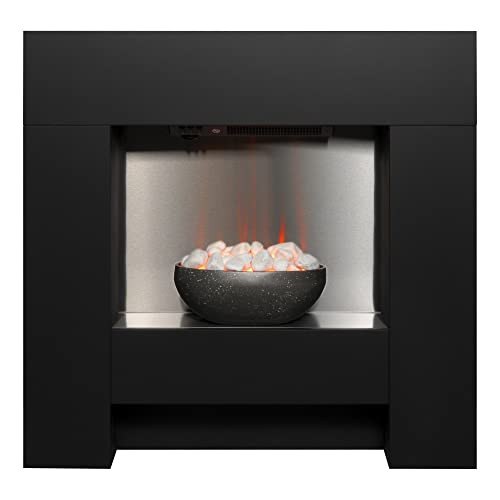17 Reasons Why You Should Beware Of Buy Fireplaces UK
A Comprehensive Guide to Buying Fireplaces in the UK
Fireplaces have long been a centerpiece in homes, offering both warmth and aesthetic appeal. In the UK, the varied environment makes fireplaces an integral feature in many homes. Whether one is looking for a functional heating solution or an elegant centerpiece, understanding the different kinds of fireplaces and the factors to think about when purchasing is crucial. This post will supply an in-depth summary of the types of fireplaces offered, factors to consider before purchasing, and answers to often asked questions.
Kinds of Fireplaces
When considering the purchase of a fireplace, one need to comprehend the large array of alternatives offered. Here's a breakdown of the typical kinds of fireplaces in the UK:
Type of Fireplace
Description
Pros
Cons
Open Hearth
Traditional fireplace; wood-burning.
Traditional appeal, good heat distribution.
Ineffective, requires more upkeep.
Wood-Burning Stove
Enclosed wood-burning system developed for efficiency.
High-efficiency heating, wide array of styles.
Requires area for wood storage, might need chimney lining.
Gas Fireplace
Uses natural or propane gas for heating.
Easy to utilize, low upkeep.
May require professional setup, can be less warm than wood.
Electric Fireplace
Utilizes electrical power to create heat and flames.
Easy setup, doesn't require a chimney.
Usually less effective for heating, may lack the ambiance of genuine flames.
Bioethanol Fireplace
Burns bioethanol for a clean-burning flame.
No venting required, modern style.
Fuel can be pricey, less heat output.
Pellet Stove
Utilizes compressed wood or biomass pellets.
Effective and eco-friendly.
Needs electrical power to run, requires regular feeding and cleansing.
Factors to consider Before Buying a Fireplace
Before devoting to the purchase of a fireplace, a number of essential aspects should be taken into account:
Purpose: Determine whether the fireplace will serve mainly for heating or as an aesthetic addition to the space.
Type of Fuel: Consider the type of fuel that best fits your needs— wood, gas, electricity, or alternative options.
Installation Costs: Assess the total setup expense, which might include chimney work, flue installation, or extra modifications to the home.
Space Availability: Check the space available and make sure that the selected fireplace fits comfortably within the designated location.
Design and style: Choose a design that matches the existing design of your home, whether modern, rustic, or traditional.
Upkeep: Understand the maintenance requirements related to each type of fireplace. For example, wood-burning options might require routine cleansing of flues and chimneys.
Energy Efficiency: Assess the energy efficiency of the fireplace, particularly if it will work as the main heating source.
Regional Regulations: Be aware of regional guidelines and standards concerning setups, particularly for wood-burning and gas home appliances.
Frequently Asked Questions about Buying Fireplaces in the UK
1. What is the very best type of fireplace for an environment-friendly home?
Response: A wood-burning range or a pellet range can be great environment-friendly choices, as they utilize sustainable resources. Bioethanol fireplaces are likewise clean and produce no hazardous emissions.
2. Do I need a chimney for a gas fireplace?
Answer: Most gas fireplaces require venting to the outside, which can be through an existing chimney or through a direct vent system that vents through the wall.
3. How do Best Fireplace UK figure out the ideal size of fireplace for my room?
Answer: The size will depend on the space's square video and the kind of fireplace. Generally, a professional can determine the BTUs (British Thermal Units) required based upon the room size.
4. What is the average expense of installing a fireplace in the UK?
Answer: Installation costs can differ widely depending upon the kind of fireplace and its complexity, ranging from ₤ 500 for electric fireplaces to ₤ 5,000 for some custom installations of wood stoves or gas units.
5. Are electric fireplaces safe to utilize?
Response: Yes, electric fireplaces are generally really safe, as they do not produce genuine flames or emissions. Nevertheless, similar to any electrical home appliance, they must be used according to manufacturer standards.
The decision to buy a fireplace in the UK is multifaceted and depends upon many factors, consisting of style, performance, purpose, and setup needs. By comprehending Going Listed here of fireplaces and assessing individual requirements and preferences, one can make an informed choice that improves their home and experience. With the information provided, prospective purchasers can embark on their journey to discover the perfect fireplace that integrates functionality with the convenience and heat that this quintessential function offers.
In summary, investing in a fireplace is more than simply choosing a heating option; it has to do with including character to a home while ensuring convenience for many years to come.
